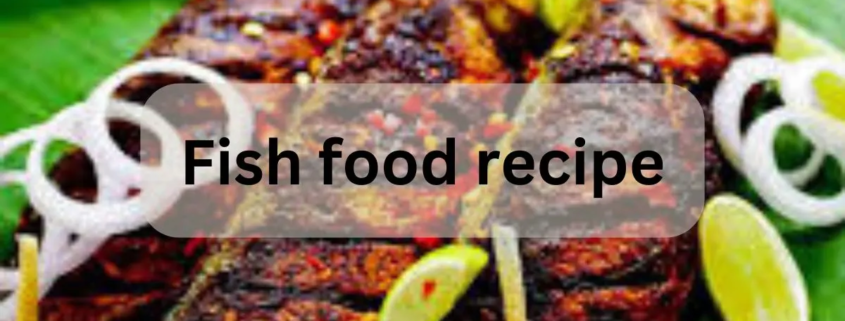Fish Food Recipe: Simple Steps for Healthier Fish
Introduction
Here you will learn on how to prepare fish food recipe aquarium fish on your own. Any aquarist will tell you that for the proper functioning of the aquarium, the fishes’ health is crucial. Thus, one of the ways of guaranteeing that the fish are healthy involves preparing their meals instinely. Not only is it fulfilling, they can also regulate the kind of foods and the quality that the child gets.
Advantages of Preparing Your Fish Food at Home
Control Over Ingredients
This way, while preparing fish food recipe, you are in a position to control the kind of food that is given to the fish. This implies that your fish are well fed to the best of your ability without having to feed them on food full of chemicals and preservatives.
Cost-Effectiveness
Preparing fish food at home is cheaper compared to buying the fish food recipe the stores. Commercial fish food can be very costly some come from your wallet more expensively than others, especially the quality brands. It allows you to purchase large amounts of ingredients and save money since the products made this way would be relatively cheap.
Tailored Nutrition
Fish belong to groups that require different food to feed on. Preparing your own fish food lets you prepare special feeds that the fish needs considering their feeding habits, whether they are flesh eaters, plant eaters or both.
Understanding Fish Dietary Needs
Meat eaters vs. Vegetable eaters vs. Both
Classification of fish can be done depending on their feeding habits categorically. It is essential for carnivorous fish to feed on mainly protein in their diet; herbivorous fish on the other hand feeds mainly on plant material while the omnivorous fish feeds both the protein and plant material in equal proportion.
Protein Requirements
The part played by protein meals is that they are useful in development and regeneration of tissues in fish. They should also incorporate foods that contain high quality protein mostly in the morning to make them healthy and energetic.
Essential Vitamins and Minerals
Vitamins and minerals provides key input to the health status of the fish. It plays different roles in a human body such as metabolism, immune system, and even bone health.
Ingredients for Fish Food
Protein Sources
Fish, Shrimp, and Seafood Fresh or frozen seafood is good protein source because it is not only nutrient dense but also low in fat. One can use white fish, shrimps, and squids.
Plant proteins For any kind of feeding regime, from herbivore fish to omnivore fish; plant protein such as spirulina, soybeans and peas are ideal for the fish.
Vegetables
Spinach and other similar products Spinach, kale, and lettuce, are some of the many leafy greens that are important sources of essential vitamins and nutrients.
Other Veggies Other vegetables which are also used in making fish food recipe the following: green village, carrots, zucchini and peas.
Binders and Fillers
Preparing the Ingredients
Cleaning and Prepping Seafood
Make sure all seafood is washed and any components of the seafood that are not fit for human consumption is taken out before the blend.
Chopping Vegetables
Also, cut the vegetables into smaller pieces that can be easily blended and so that they can be evenly distributed in the foods.
Measuring Supplements
Record feeds given to your fish with the aid of a scale to know whether your fish is taking the appropriate amount of vitamins and minerals supplements.
Basic Fish Food Recipe
Ingredients List
1/4 cup white fish, chopped
Shelled and boned 1 cup shrimp
People who cook Legumes and vegetables should take not more than one cup of mixed vegetables such as spinach, peas and carrots.
Take amount of gelatin or agar-agar used is 2 tablespoons.
It may also be sprinkled with 1 teaspoon of fish vitamins.
Blend Seafood and Vegetables: Crude white fish and shrimps should be blended with mixed vegetables in a blender. Comb to a paste like puree format.
Prepare Gelatin/Agar-Agar: This should be done until the gelatin or agar-agar swells and softens in the warm water as per the instructions on the packet.
Mix Ingredients: Once this has been done, add the blended seafood and vegetables mixture into the liquid containing the dissolved gelatin or agar-agar. Put the fish vitamins and minerals and stir well.
Pour into Molds: This should then be poured in ice cube trays or individual molds for easy preparation of the portion sizes.
Refrigerate: Pour this mixture to the molds then put the molds in the refrigerator until this becomes firm.
Store: After this, transfer the food from the molds and this should then be put into a freezer-safe container and kept in the freezer.
Different variations depending on the type of fish that will be cooked;
Carnivorous Fish Recipe
For carnivorous fish, add more quantities of seafood, and decrease the quantity of vegetables. Maybe expand on the protein sources by selecting more like squid or mussels.
Herbivorous Fish Recipe
For herbivores fish it’s very important to feed them plant protein and foods and many vegetables. You may incorporate such feed types as spirulina and algae wafers.
Omnivorous Fish Recipe
For omnivorous fish, it is advisable to make provision for seafood combined with adequate amounts of vegetables. It’s preferred to incorporate plant protein together with animal protein.
Storing Homemade Fish Food
Proper Storage Methods
Pet store should pack the homemade fish food recipe tight containers to enhance its quality and avoid the occurrence of freezer burn.
Shelf Life
As earlier mentioned homemade fish food can be stored in the freezer and it can last up to six months. Before dispensing it to your fish, you should make sure to look for signs of spoilage.
Tips for Freezing
Store the fish food recipe packs so that they can be thawed as and when it is required.
Feeding Tips
Portion Control
Do not over feed the fish as this will result to contamination of water, feed your fish only the amount that they can eat in a few minutes.
Feeding Frequency
This is applicable with most fish whereby feeding is done twice a day, each time being a small portion. To avoid having your fish stressed, you need to tweak it depending on the fish type that you have.
Monitoring Fish Health
Overfeeding
Feeding more than required should be prevented because it causes water pollution and your fish may fall sick.
Using Inappropriate Ingredients
Make sure that all food types to be fed to your fish are safe and nutritious for your fish.
Poor Storage Practices
When not stored properly, homemade fish food recipe go bad, or some of the nutrients may be lost.
Signs of Healthy Fish
Behavioral Indicators
Evaluating the general health state of fish is quite easy since a healthy fish will swim as a normal, well lit fish.
Water Quality
Ensure the quality of water you keep is good to support the inhabitants you want to stock with fish. Replacement of the water and the application of filters are mandatory.
Recipe adjustment because of fish health Poor water quality and fish diseases can result to adjustments and changes of food formulation and preparation.
Symptoms That Your Fish’s Diet Needs A Change
This is a clear indication that your fish might require a change of diet and this includes the time where the fish loses its natural color, has become less active, or even falls sick.
Making Necessary Changes
Tweak the types of foods you feed your fish and the variety of feeds that are in the market today to what best suits your fish.
Conclusion
Meet the tastiest fish live fish food recipe will prepare at home to guarantee the aquarium fish happiness, health, and shiny skin. Including carrots, which helps to enhance pet’s health and is easy to prepare, this recipe is perfect for any type of fish.




Leave a Reply
Want to join the discussion?Feel free to contribute!